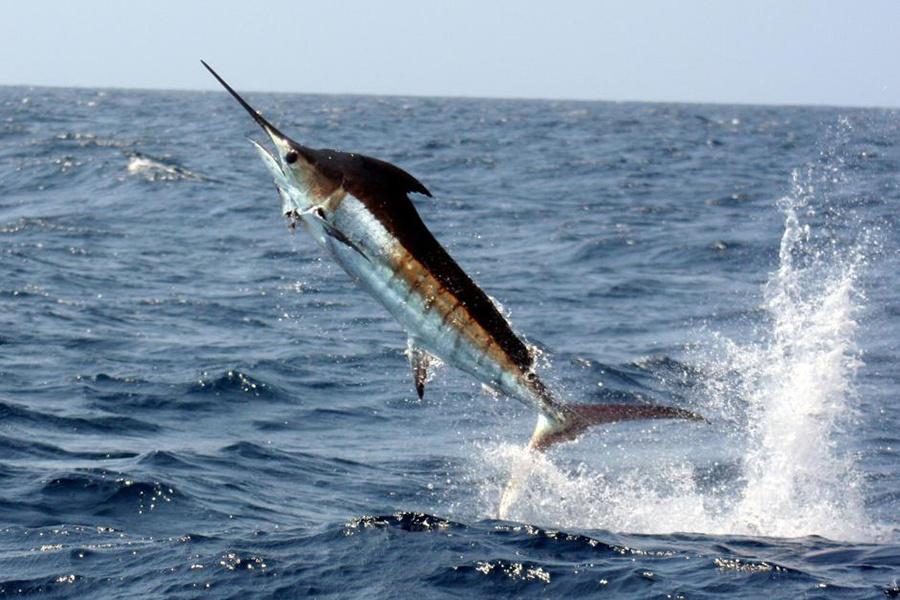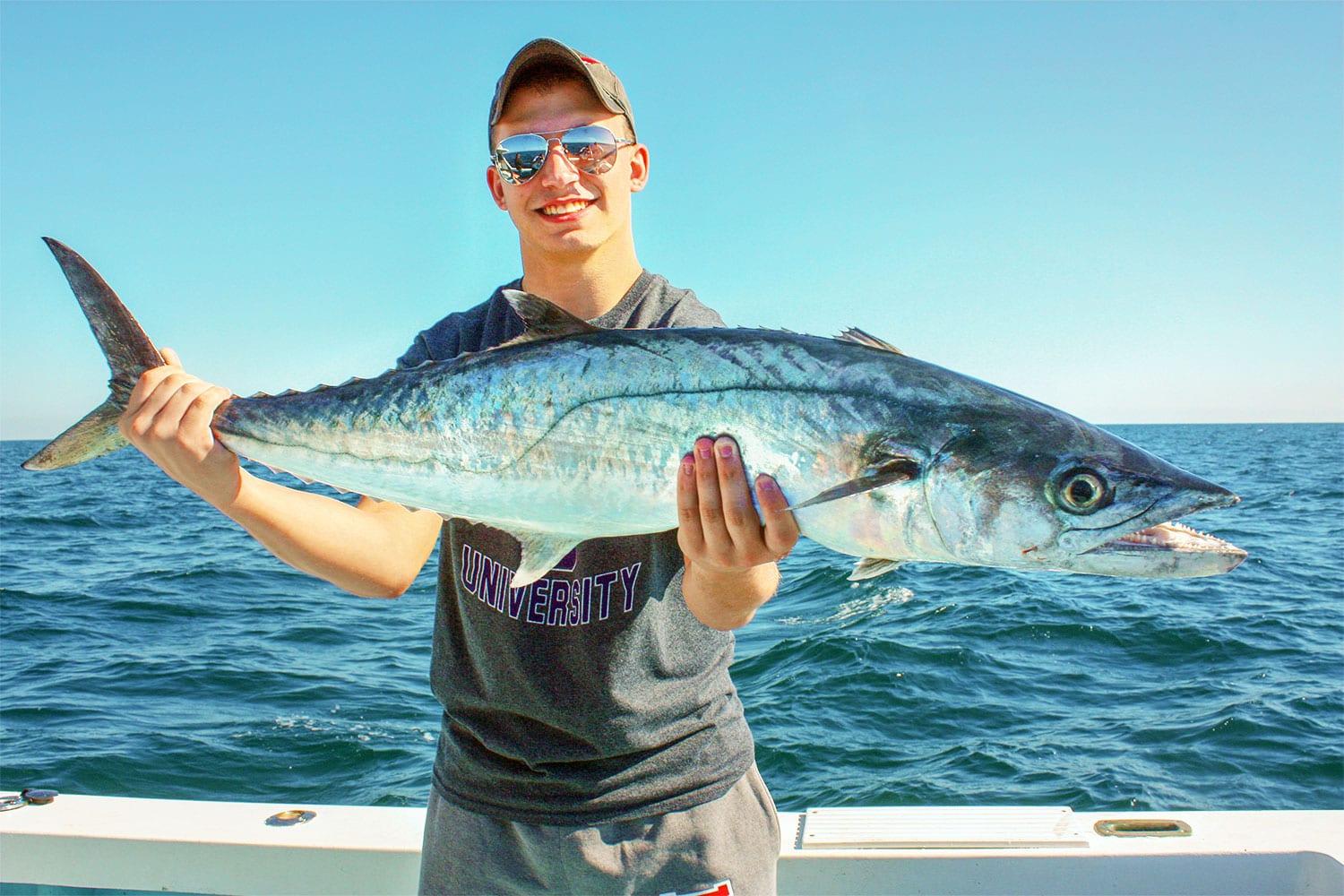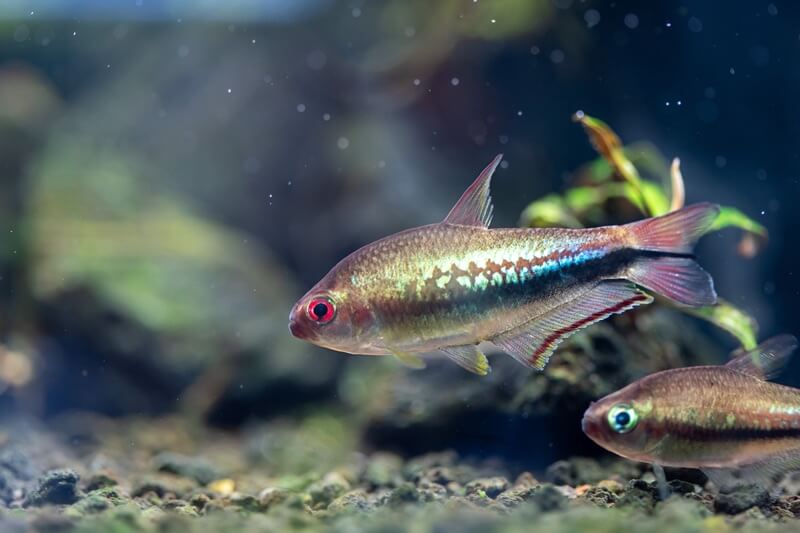The Gulf of Mexico is a popular destination for fishing enthusiasts, with a wide variety of fish species available for the taking. Whether you’re looking for a tasty catch or a record-breaking creature, the Gulf of Mexico has something for everyone.
In this article, we will explore 10 types of trophy fish found in the Gulf of Mexico ranked by size. These fish range from the massive blue marlin to the smaller king mackerel, and each one offers a unique challenge for anglers. Keep reading to learn more about these impressive fish and how to catch them.
You are reading: 10 Types Of Trophy Fish Found In Gulf Of Mexico Ranked By Size

10 Types Of Trophy Fish Found In Gulf Of Mexico Ranked By Size
Blue Marlin

The blue marlin is one of the largest billfish species in the world and presents a formidable challenge to recreational fishermen. Many anglers consider catching a blue marlin to be the pinnacle of angling success.
The fish has brilliant colors, with bright cobalt blue on top, a silver-white belly, and a series of colorful vertical stripes along the length of its body. Females can live more than 30 years, while males generally live no more than 18.
Blue marlin can weigh over 1,000 pounds and reach lengths of 14 feet, with the International Game Fish Association’s all-tackle record for this species being 1,402 pounds.
Swordfish
Swordfish are one of the most powerful fish in the ocean and are prized by recreational anglers in the Gulf of Mexico. These elusive and combative fish can grow up to 1,200 pounds and 14 feet long.
Swordfish have a long, flattened bill that looks like a sword, as their name implies, and a stout, rounded body with large eyes. They are found in the Gulf Stream of the Western North Atlantic, extending north into the Grand Banks of Newfoundland.
Swordfish live in the surface to mid-water but feed throughout the water column, moving from spawning grounds in warm waters to feeding grounds in colder waters.
If you choose to harvest a swordfish, the current NOAA minimum size is 47 inches as measured from the tip of the fish’s lower jaw to the inside.
Yellowfin Tuna
Yellowfin tuna (Thunnus albacares) is a species of tuna found in pelagic waters of tropical and subtropical oceans worldwide. These torpedo-shaped fish have dark metallic blue backs, yellow sides, and a silver belly. They have very long anal and dorsal fins and finlets that are bright yellow.
Yellowfin tuna are epipelagic fish that inhabit the mixed surface layer of the ocean above the thermocline. They are highly migratory and are found throughout the Pacific, Atlantic, and Indian Oceans.
Read more : Discover Types Of Brown Beetles
Yellowfin tuna often travel in schools with similarly sized companions and sometimes school with other tuna species and mixed schools of small yellowfin and skipjack tuna, in particular, are commonplace. They are often associated with various species of dolphins or porpoises, as well as with larger marine creatures such as whales and whale sharks.
Yellowfin tuna are highly sought after for their impressive size and excellent taste, making them a popular target for recreational anglers.
Wahoo

Wahoo (Acanthocybium solandri) is a popular game fish found in tropical and subtropical seas worldwide, including the Gulf of Mexico. It is known for its speed and high-quality flesh, making it a prized catch for recreational anglers.
In Hawaii, the wahoo is known as ono, and in the United States, it is sometimes called hoo. Wahoo are among the fastest fish in the sea and can weigh up to 180 pounds and grow up to 8 feet long. They have a long, slender body with blue-green coloring on their back and silver sides.
Wahoo can be caught year-round in the Gulf of Mexico, but the best time to catch them is from May to September.
Grouper

Grouper fishing is a popular sport fishing activity in the Gulf of Mexico, attracting both experienced and novice anglers. These powerful game fish can grow to impressive sizes and are known for their fighting abilities, making them a challenging and rewarding catch for sport fishermen.
Here are some of the most common types of grouper found in the Gulf of Mexico:
– Black Grouper
– Red Grouper
– Gag Grouper
– Scamp Grouper
– Yellowfin Grouper
– Yellowmouth Grouper
Red Snapper
Red snapper is a popular game fish found in the Gulf of Mexico, known for its delicious taste and fighting abilities. These fish can grow up to 2 feet long and weigh up to 50 pounds.
Red snapper fishing is regulated in the Gulf of Mexico, with specific size limits, bag limits, and closed seasons in place to ensure the sustainability of the fishery. The recreational harvest of red snapper is open every Friday, Saturday, and Sunday throughout the months of September, October, and November, as well as Labor Day and Thanksgiving Day.
The 2023 Gulf red snapper season will open on June 16 and run consecutively through July 31, 2023, and will reopen on September 1 for 3-day weekends in September, October, and November (Friday, Saturday, and Sunday).
Cobia
Cobia is a popular game fish found in the Gulf of Mexico, known for its exciting and easy-to-catch nature. These fish can weigh up to 100 pounds and grow up to 6 feet long. Cobia fishing is a year-round activity in the Gulf of Mexico, but there are two peak seasons to be aware of.
Here are some practical things to know about Gulf Coast cobia fishing:
– Cobia are often found swimming near the surface of the water, making them easy to spot.
– Cobia are often found swimming near other large marine creatures, such as sharks, rays, and sea turtles.
– Cobia are attracted to structure, such as buoys, oil rigs, and shipwrecks.
– Cobia are often caught using live bait, such as eels, crabs, and small fish.
– Cobia are known for their fighting abilities and can put up a strong fight when hooked.
Mahi-Mahi
Read more : 10 Types Of Old World Monkeys
Mahi-mahi, also known as dolphinfish, is a popular game fish found in the Gulf of Mexico. These fish are known for their acrobatic jumps and fast swimming speeds, making them a thrilling catch for recreational anglers.
Mahi-mahi can grow up to 80 pounds and reach lengths of 6 feet. They are often found swimming near the surface of the water and are attracted to floating debris and weed patches. Mahi-mahi fishing is a year-round activity in the Gulf of Mexico, but the best time to catch them is from April to August.
Here are some tips for catching mahi-mahi in the Gulf of Mexico:
– Troll for them using skirted baits or naked ballyhoo.
– Use live bait, such as eels or small fish.
– Look for floating debris and weed patches, as mahi-mahi are often found in these areas.
– Use brightly colored lures or baits to attract their attention.
– Be prepared for a fight, as mahi-mahi are known for their strength and agility.
Amberjack
Amberjack is a popular sport fish found in the Gulf of Mexico, known for its size and fighting abilities. Here are some tips for catching amberjack in the Gulf of Mexico:
– Amberjack can be caught year-round in the Gulf of Mexico, but the best time to catch them is from April to October.
– Amberjack are often found near wrecks, reefs, and other underwater structures.
– Amberjack can be caught using live bait, such as eels, squid, and small fish, as well as artificial lures, such as metal jigs and spoons.
– Amberjack are known for their strength and fighting abilities, so be prepared for a challenging catch.
– Regulations and restrictions on amberjack fishing in the Gulf of Mexico vary depending on the location and time of year, so be sure to check the latest rules and regulations before heading out.
It’s worth noting that the recreational fishing season for greater amberjack in the Gulf of Mexico is regulated and subject to change, with specific size limits, bag limits, and closed seasons in place to ensure the sustainability of the fishery.
King Mackerel

King mackerel is a popular game fish found in the Gulf of Mexico, known for its speed and fighting abilities. These fish can weigh up to 100 pounds and grow up to 5 feet long. King mackerel fishing is a year-round activity in the Gulf of Mexico, but the best time to catch them is in the spring and fall.
Here are some tips for catching king mackerel in the Gulf of Mexico:
– King mackerel are often found near wrecks, reefs, and other underwater structures.
– King mackerel can be caught using live bait, such as sardines, herring, and mullet, as well as artificial lures, such as spoons and jigs.
– King mackerel are known for their speed and agility, so be prepared for a fast and exciting fight.
– Regulations and restrictions on king mackerel fishing in the Gulf of Mexico vary depending on the location and time of year, so be sure to check the latest rules and regulations before heading out.
FAQS
1. What are the best techniques for catching trophy fish in the Gulf of Mexico?
The best techniques for catching trophy fish in the Gulf of Mexico vary depending on the species, but some common techniques include trolling, bottom fishing, and using live bait or artificial lures.
2. What are the best spots for trophy fish fishing in the Gulf of Mexico?
The best spots for trophy fish fishing in the Gulf of Mexico vary depending on the species, but some common spots include wrecks, reefs, and other underwater structures.
3. What are the regulations and restrictions on trophy fish fishing in the Gulf of Mexico?
The regulations and restrictions on trophy fish fishing in the Gulf of Mexico vary depending on the species, location, and time of year. It’s important to check the latest rules and regulations before heading out.
4. What are some of the most common types of trophy fish found in the Gulf of Mexico?
Some of the most common types of trophy fish found in the Gulf of Mexico include blue marlin, swordfish, yellowfin tuna, wahoo, grouper, red snapper, cobia, mahi-mahi, amberjack, and king mackerel.
5. What is the best time of year to catch trophy fish in the Gulf of Mexico?
The best time of year to catch trophy fish in the Gulf of Mexico varies depending on the species, but some common times include spring and fall for king mackerel and amberjack, and summer for mahi-mahi.
6. What are some tips for catching trophy fish in the Gulf of Mexico?
Some tips for catching trophy fish in the Gulf of Mexico include using the right bait and techniques for the species, fishing near underwater structures, and being prepared for a challenging fight.
Source: https://petstutorial.com
Category: Animals










